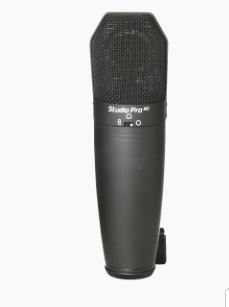
Every creator knows that sound carries more weight than visuals in many cases. A shaky video with crisp audio will hold attention far longer than a flawless clip with muffled voices. That’s why microphones remain at the center of modern content creation.
In this blog, we’ll look at the trends shaping microphone design and why these changes matter to you. From plug-and-play simplicity to smart controls and future-ready features, you’ll see what defines the best tools for today’s recording setups.
USB & Hybrid Designs
If you’re searching for the best studio mic, the first thing you’ll notice is how many options now come with USB connections. These mics have changed the way creators record at home. Instead of buying an audio interface and wrestling with setup, you plug a cable directly into your computer and get straight to work. For podcasters and musicians who want speed, this saves both money and frustration.
But the trend doesn’t stop at basic USB. Many new microphones now feature hybrid outputs, meaning they include both USB and XLR ports. This makes them future-proof. You can start small with direct USB recording and later upgrade to a professional interface without replacing your mic. It’s a design that grows with your skills and ambitions.
Creators also love the added controls that appear on these models. You’ll often find mute buttons, headphone jacks for monitoring, and gain knobs built right into the mic body. This keeps you in control without extra equipment or software. In short, plug-and-play has gone from being a beginner’s feature to something even experienced artists value for its reliability and ease.
Noise Reduction & Real-Time Control
One of the biggest shifts in microphone design is how much they now help you manage your environment. Recording spaces aren’t always quiet, and editing out noise later takes time. Modern microphones are tackling this by including noise suppression tools directly inside the hardware.
Some models use AI-driven filters to cut down on hums, fans, or background chatter before the signal even reaches your computer. This means your raw recording already sounds polished. For someone streaming live, this is a lifesaver because you don’t get a second chance to clean up the audio.
Another trend is real-time control. Mics now feature smart knobs, LED indicators, and touch-sensitive panels that let you adjust gain or mute instantly. These small but effective tools stop you from breaking focus mid-session to hunt through menus. Some even color-code signals, so you know if you’re too quiet or clipping.
Lightweight wireless microphones are also picking up popularity thanks to longer battery life and portable designs. Many are paired with onboard processing to keep voices clear even in noisy outdoor conditions. The push here is simple: creators want their tools to do more of the heavy lifting, and microphones are finally stepping up.
Flexibility Across Different Creative Setups
The days of owning a single mic for one purpose are fading. Today, creators need microphones that can switch roles without fuss. You might record a podcast one day, stream gameplay the next, and track vocals over a beat the day after. Buying separate gear for each job isn’t realistic for most people.
That’s why manufacturers are designing microphones with versatility in mind. Many include zero-latency headphone jacks so you can hear yourself in real time. Others come with built-in filters that adjust tone for speech or singing with just a button press. These aren’t gimmicks. They save you hours in post-production.
Portability is also a key part of flexibility. Compact designs fit easily on a crowded desk or slip into a bag for travel. Some models even ship with adjustable stands or shock mounts so you can record almost anywhere. For streamers, the ability to set up quickly and know your audio won’t suffer is priceless.
If you’re building content across different formats, these all-purpose microphones make life easier. Instead of juggling several pieces of equipment, you have one reliable mic that adapts to the way you work.
Balancing Performance with Practicality
While all these features sound appealing, not every option will fit your workflow. This is where balance becomes important. Chasing after every new microphone trend can drain your budget, and many extras may go unused.
Start by asking yourself what you actually need. If you mostly record at a desk in a quiet room, advanced noise filters may not matter as much as overall sound quality. If you stream live shows, however, tools like instant mute or real-time monitoring should move higher on your list.
Here are a few practical points to keep in mind:
- Sound first: Always choose microphones that deliver clear recordings over those that look flashy.
- Connection options: USB is convenient, but if you plan on building a larger studio, having an XLR port is worth it.
- Durability: A sturdy build pays off in the long run, especially if you plan to travel with your gear.
- Budget vs. growth: Don’t overspend on features you’ll never use, but also consider what will still serve you as your projects expand.
The good news is that budget-friendly microphones are improving fast. You can now find models with surprisingly strong sound performance and basic noise reduction tools without spending professional-studio money. This makes it easier for new creators to start strong without compromising too much.
Conclusion
Microphone design is moving closer to what creators actually need: tools that blend strong sound with everyday usability. From hybrid outputs to smart controls, these changes reflect how content creation continues to evolve outside of traditional studios.
As technology grows, you can expect microphones to carry even more built-in features, from adaptive noise filtering to wireless formats that travel with you anywhere. In the near future, the best studio mic may be less about chasing specifications and more about giving you reliable, adaptable sound that matches your unique creative style.




